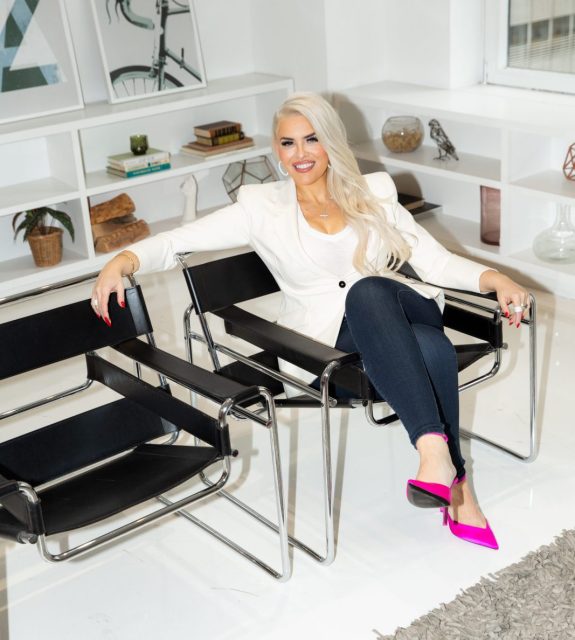Although cupping therapy is not novel, its popularity has spiked only recently. Thanks to the 2016 Olympic Games, where athletes sported dark bruises on their skins, many can now instantly recognize these tell-tale signs of cupping. But those ominously looking circles also lead to misconceptions about the therapy, which originated centuries ago.
To parse the techniques and benefits of cupping, Haute Beauty talked with Shannon Mariani, spa director at Four Seasons Las Vegas, where the procedure can elevate any service.
What is cupping?
Cupping therapy is actually an ancient traditional, typically traditional Chinese form of medicine or alternative form of medicine, if you will. It actually dates back further than that, even back to ancient Egyptian times.
It is a therapy that has been throughout the generations in different form, here and there. It is something that there is a lot of attention to right now. There are a lot of different ways that you can do cupping, a lot of different kinds of cupping - anything from supper technical to light therapeutic type of cupping.
How does cupping therapy work?
The basis behind it is a cup in a combination of using a vacuum or a suction type of device. It is placed on the skin and it basically vacuums up the muscle to release it from the layers of fascia underneath. Think of it as a way to kind of warm up the muscles and penetrate deeper into the skin, using a tool. It penetrates through all the of the layers of fascia into the muscle to try to use deep work, therapeutic work, targeted work - whatever it might be that you are looking for.
You can use that in all different types and forms - as light work as you want or as deep work as you want, with different types of cupping, with different placement of the cup. It is really a dynamic and super interchangeable therapy that you can use in all different types of work.
What types of cups are used?
There are different cups. Cupping therapy can be conducted with glass cups, using an element of fire. A little bit of alcohol is placed on the inside of the cup and then lit and then once you place that on the skin, it sucks the oxygen and the fire goes out and that creates the suction. So that is not something that we do here at the spa but that is one of the types of cupping that you can do.
You can use silicone cups, which is what we use here at the spa and you can press them onto the skin and that creates the suction. So, it is a little bit more user-friendly, if you will, as we are not lighting anything inside the hotel or inside the spa. But there is no real difference between using glass or silicone. Silicone was obviously created as cupping therapy kind of evolved through the years.
Does the type of cups affect the effects of the therapy?
The effects are more in where you place the cups and whether you are leaving them or moving them. A lot of times the cupping technique is incorporated with massage. Think when people come to get deep-tissue massage, it takes awhile to warm up those muscles to almost make them pliable, if you will, and cupping kind of eases that process because it penetrates through those layers of fascia and allows you to work that muscle a little bit quicker. For someone who doesn't have a lot of time and is looking at maybe 15-minute service but wants it to be as effective as an 80-minute service, using cupping would be what allows us to work that muscle quicker and deeper.
What can a novice expect the first time they get a cupping treatment?
Surprisingly enough it doesn't feel much different than rubbing on a particular area, or a particular muscle. Obviously it feels a little bit different but because we do not parking - we do not leave those cups on the body - you will feel moving that cup on your body. You feel that just like moving your hands on your back. You are not feeling much of a difference but the therapist is feeling the difference because they can feel your muscle warming up and then they are able to follow over it.
But from a guest's perspective, there is no pain. It doesn't hurt. You can feel a little but of pulling as if someone is moving their hand - you can feel your skin kind of move and roll with it but not much else.
What conditions can cupping treat?
From a body treatment standpoint, the benefits are huge - increased circulation, pain relief from muscle soreness or spasm, pain relief from knots that you might feel in your body, the release of any toxins or lactic acid build up within your muscles. It has also been used for slimming effects or help with any dimpling along your skin because what that is actually fascia built up underneath your skin. It is hugely applicable to just about any service - from whether you are doing an entire massage with cupping or you are just doing spot treatment with cupping. It is a really, really unique service that you can use in combination with other services.
What other services go well with cupping?
You can combine it with deep-tissue massage. You can combine it with acupuncture in different spas around the world. The possibilities are really endless depending on what you are looking for. If you are looking for a body treatment with a slimming effect, you can obviously add cupping. If you are looking for pain management, you might not want to go deep-tissue on that but you might want to do some light cupping on it and then possibly an acupuncture. That is why it is such a favorite.
Is cupping costly?
It depends on what you are buying. From out standpoint, it is inline with all of our service pricing. We offer it as enhancement to your regular service that you can do - a spot treatment for certain areas - or you can get a whole service as well. We offer it as 15-minute, 80-minute and a 100-minute increment, so the cupping therapy is used throughout the entire massage on all areas. The price range for that is anywhere from $185 up to $345.
What final advice would you give to those interested in trying cupping?
For me more than anything it might a little bit intimidating when you start looking at cupping and the different types of services that there are and all the different forms of cupping that are out there. But it is about talking to your therapist as they are not as intimidating as they sound. My experience is that once someone tries it, they are very thankful that they did it because it feels so good.

























